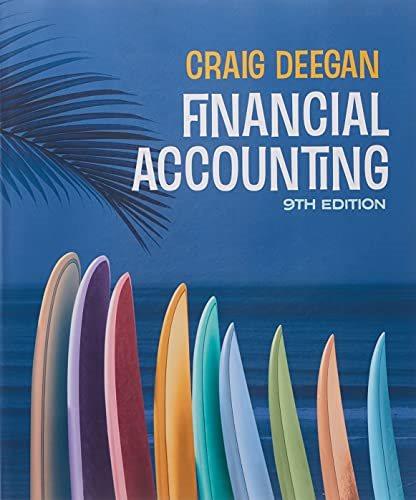Question
Problem Set 1: Mathematical Foundations for Economic Models Using Tables and Graphs to Explain Economic Models (WLO 1.4) 1.? ?The table below contains typical economic
Problem Set 1: Mathematical Foundations for Economic Models
Using Tables and Graphs to Explain Economic Models (WLO 1.4) 1.? ?The table below contains typical economic data. It shows the quantity of a good that is demanded by purchasers and the quantity supplied by producers at various prices. Price Quantity Demanded Quantity Supplied $100 10 25 $80 20 20 $60 30 15 $40 40 10 $20 50 5 $0 60 0 a. At which price is quantity supplied equal to 10? b. At which price is quantity demanded equal to 10? c. At which price are quantities demanded and quantities supplied the same? (?Note: This is the equilibrium price.) d. At which price is the quantity demanded ?less than? the quantity supplied? (This represents a surplus.)? ? What is the size of the surplus? (That is, how much more is supplied than demanded?) e. At a price of $20 we see that the quantity demanded is ?greater than? the quantity supplied. This represents a ?shortage?. What is the size of the shortage? (That is, how much more is demanded than supplied?)
2. Refer to the graph below, which represents typical economic information about the amount of a product demanded and supplied at various prices.
a. At what price is quantity demanded equal to 2000? b. At what price is quantity demanded equal to zero? c. At what price is quantity supplied equal to 1400? d. What is the equilibrium quantity? (Where quantity demanded and quantity supplied are equal.) e. What is the equilibrium price? (Where quantity demanded and quantity supplied are equal.)
Problem Set 1: Mathematical Foundations for Economic Models
Using Equations to Explain Economic Models (WLO 1.4) 3. Text ch 3 Prob 1. The following function describes the demand condition for a company that makes caps featuring names of college and professional teams in a variety of sports. Q ? = 2,000 - 100?P where ?Q ? is cap sales and ?P ? is price. a. How many caps could be sold at $12 each? b. What should the price be in order for the company to sell 1,000 caps? c. At what price would cap sales equal zero?
4. Text ch 3 Prob 3. The following relations describe the supply and demand for posters. Demand: ?Q ? D ? = 65,000 - 10,000?P Supply: ?Q ? s ? = -35,000 + 15,000?P a. Use the equations to fill in Qs and Qd at the prices listed in the table. Price Qs Qd Surplus or Shortage $6.00 $5.00 $4.00 $3.00 $2.00 $1.00
b. Find the difference between Qs and Qd at each price. Indicate if it is a surplus, , a shortage, or neither. (Surplus if Qs is greater and shortage if Qd is greater.) c. What is the equilibrium price? (Where Qd = Qs)




Step by Step Solution
There are 3 Steps involved in it
Step: 1

Get Instant Access with AI-Powered Solutions
See step-by-step solutions with expert insights and AI powered tools for academic success
Step: 2

Step: 3

Ace Your Homework with AI
Get the answers you need in no time with our AI-driven, step-by-step assistance
Get Started


